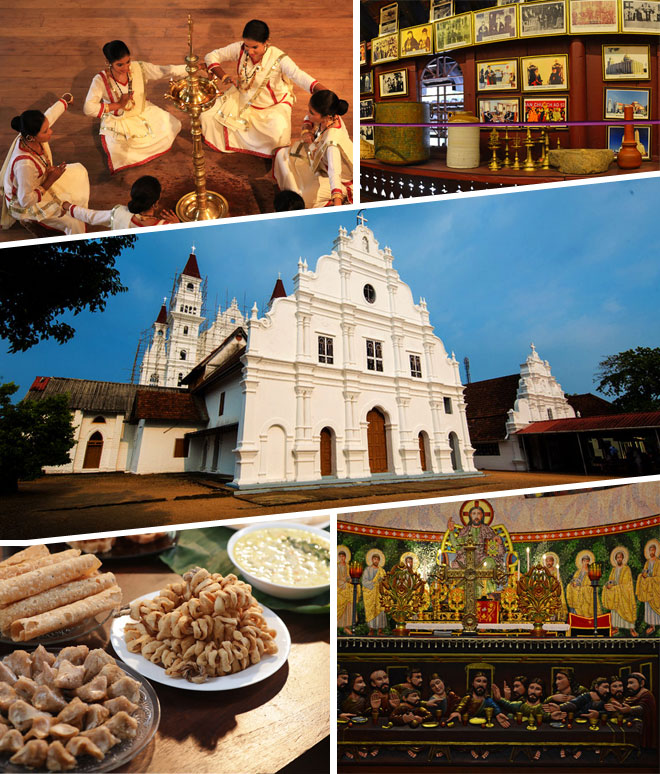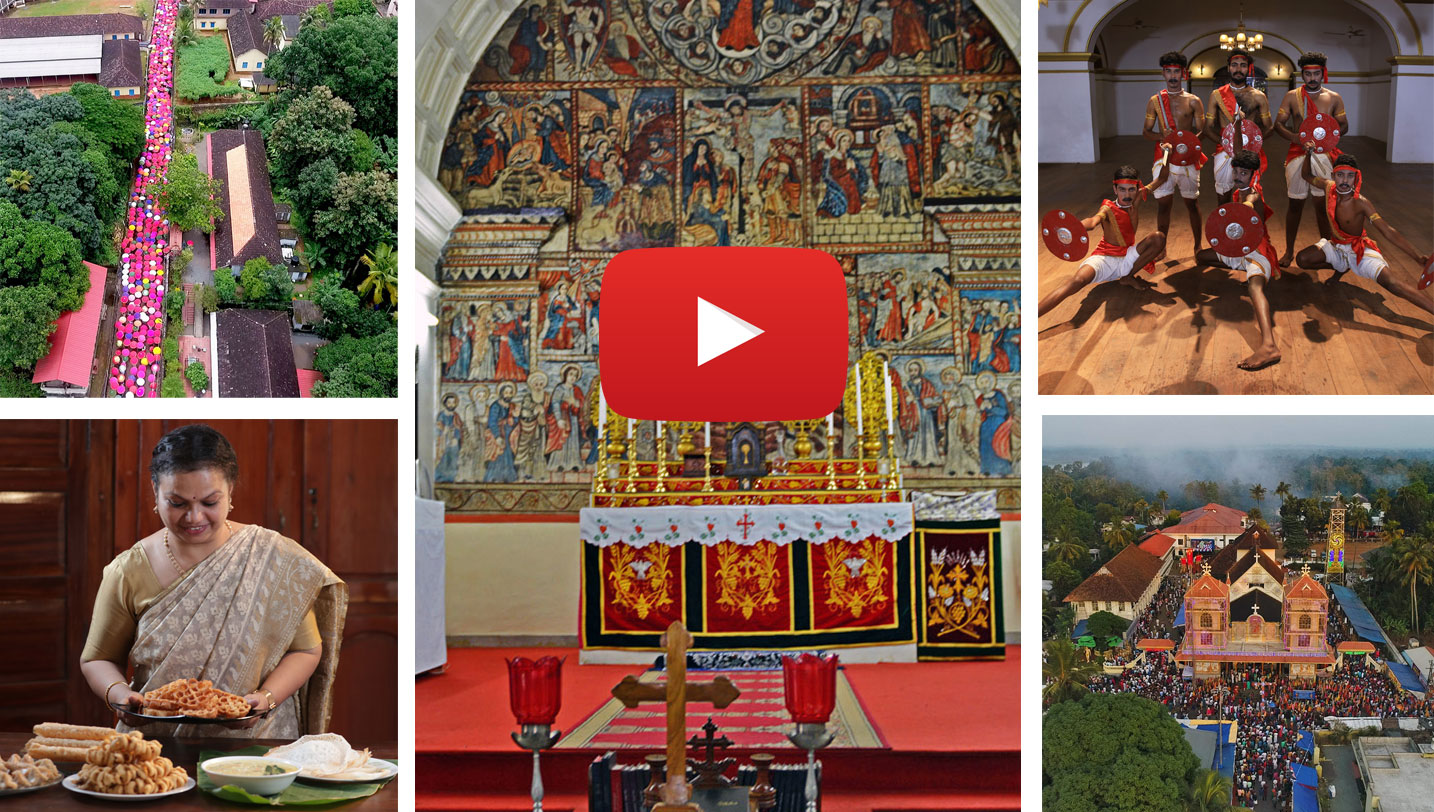Devastha Vili
Devastha Vili is traditionally performed as a prayer ritual during Lent. Rituals such as Sleeba Patha (Way of the Cross) and Devastha Vili are performed as part of the 50 days long lent, on all the Fridays of the lent period. The Way of the Cross is conducted among Syrian Catholics, by family units, in all dioceses. One person will hold the Cross; others will follow him rendering the Sleeba Patha song written by Fr. Joseph Mavungal. They pay obeisance at 14 places. The ritual is not too old. The songs of the Way of the Cross have been composed along the pattern of Latin songs. This is performed in candlelight at night. Devastha Vili has a link with the Passion of Christ, but it has no set songs or prayers. The songs sung in praise of Christ and Holy Mary, are written in a blend of Tamil and Malayalam. This is popular in the coastal stretch between Kodungalloor and Kanyakumari. Initially it was with Latin prayers and subsequently, it was written in Tamil and Malayalam too. It is also believed that St. Francis Xavier was the one who popularised it in 1550. It was the Portuguese word Devasam that later evolved into Devastha. This traditional rite is still popular at Gothuruthu, Mundamveli, Kadalvathuruthu, and Andhakaran Azhi, all, places coming under Kochi and Varappuzha dioceses.
This is all about Christ’s activities during the Passion Week. This was popular in Kerala since the 18th century. The work of Arnos Pathiri (Ernest Hanxleden 1681-1732), named Puthen Pana is very popular. This has 2454 hymns in 13 parts (Kandams). Arnos Pathiri made a bid to ensure that the Taliyola copies of this work reached all Christian families. Puthen Pana is read in Christian families on Good Fridays and also on all those days when death occurs.
The Pana begins with the grief of Holy Mary and concludes with crucifixion. Christian themes are represented in Kerala’s literary style by Arnos Pathiri. Its resemblance with Jnana Pana by Poonthanam might have prompted the author to give the name Puthen Pana, ‘puthen’ meaning ‘new.’ It covers the period from the creation of the world to the birth and death of Christ. Arnos Pathiri was the first to introduce the Bible into Malayalam literature. The poet Mallussery Chandy Mappila had written the work Ammayaya Rajakanni in the 17th century. Mar Allesu Pana and Mar Geevarghese Pana were written by him.
Pana reading contests are being conducted during the time of the 50 days lent at many places. The Kerala Sahitya Academy has conducted Pana Vayana competition in Thrissur.

